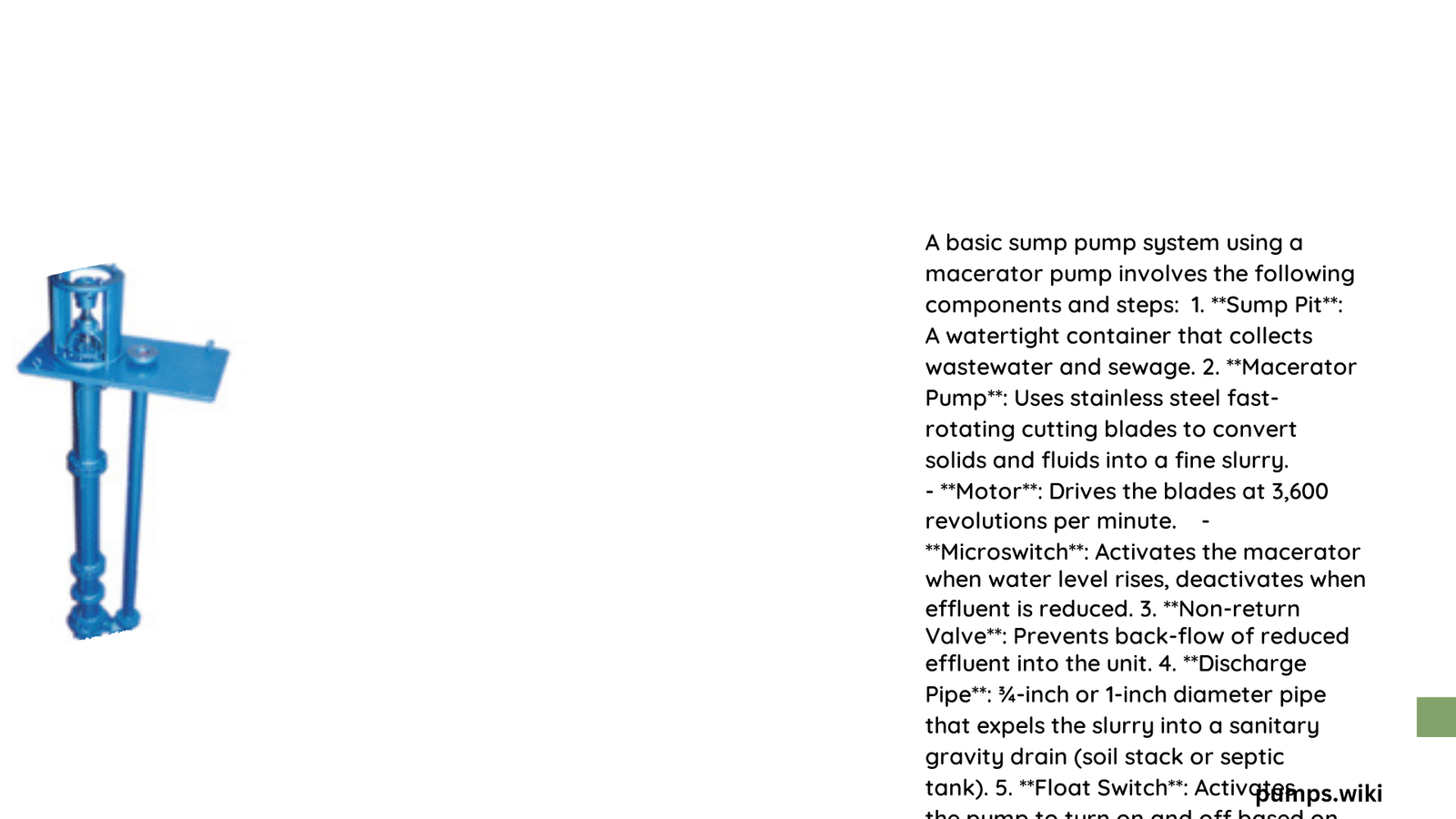A diagram of basic sump pump using a macerator pump reveals a sophisticated wastewater management system designed to efficiently handle effluent in challenging basement environments. This specialized pump combines maceration technology with drainage capabilities, breaking down solid waste and pumping it through compact piping systems, making it ideal for basement bathrooms, laundry areas, and low-lying plumbing installations.
What Are the Essential Components of a Macerator Sump Pump System?
Core Mechanical Elements
| Component | Function | Technical Specification |
|---|---|---|
| Sump Pit | Water collection zone | Minimum 18″ diameter, 24″ depth |
| Macerator Pump | Waste liquefaction | 3,600 RPM blade rotation |
| Float Switch | Automatic activation | Adjustable water level trigger |
| Discharge Pipe | Waste transportation | ¾” – 1″ diameter |
How Does a Macerator Pump Work?
The macerator pump operates through a sophisticated mechanical process:
- Waste Entry
- Effluent enters through the inlet pipe
-
Solid materials are immediately encountered by rotating blades
-
Maceration Process
- Stainless steel cutting blades rotate at high speed
- Waste is transformed into fine slurry
-
Particle size reduced to less than 2mm diameter
-
Pumping Mechanism
- Impeller drives liquefied waste
- Discharge pipe transports slurry to main sewage line
- Non-return valve prevents backflow
What Power Requirements Exist?
Electrical Specifications
- Voltage: 110-120V standard
- Power Consumption: 400-800 watts
- Motor Type: Sealed, water-resistant design
- Amperage: 3-6 amps typical range
What Installation Challenges Might Occur?
Critical Considerations
- Vertical Lift Limitations
- Maximum recommended lift: 15 feet
-
Horizontal distance: Up to 150 feet
-
Potential Installation Obstacles
- Concrete floor penetration
- Precise pipe alignment
- Electrical connection requirements
How to Select the Right Macerator Pump?
Selection Criteria
- Flow Rate Capacity
- Household fixtures supported
-
Simultaneous discharge capabilities
-
Construction Quality
- Corrosion-resistant materials
- Sealed motor design
- Robust impeller construction
Cost Analysis
Typical Investment Range
- Equipment Cost: $500 – $2,000
- Installation: $1,000 – $3,500
- Annual Maintenance: $100 – $300
Maintenance Recommendations
Preventive Care Steps
- Quarterly visual inspection
- Check float switch functionality
- Clean inlet screens
- Verify electrical connections
- Test discharge pipe for obstructions
Technical Performance Metrics
| Performance Parameter | Typical Value |
|---|---|
| Particle Size Reduction | <2mm |
| Pump Efficiency | 70-85% |
| Noise Level | 45-55 decibels |
| Operating Temperature | 40-100°F |
Professional Recommendations
- Always consult licensed plumbing professional
- Verify local building code compliance
- Consider professional installation
- Maintain comprehensive maintenance log
Potential Limitations
- Not suitable for heavy industrial waste
- Performance degrades with extreme temperatures
- Requires consistent electrical supply
- Limited to residential/light commercial applications
Advanced Troubleshooting
Common Issue Resolution
- Pump Not Activating
- Check float switch
- Verify electrical connection
-
Inspect potential blockages
-
Reduced Pumping Efficiency
- Clean maceration blades
- Check discharge pipe for restrictions
- Evaluate impeller condition
Conclusion
A macerator sump pump represents an advanced solution for complex drainage scenarios, offering precise waste management through innovative mechanical design.

